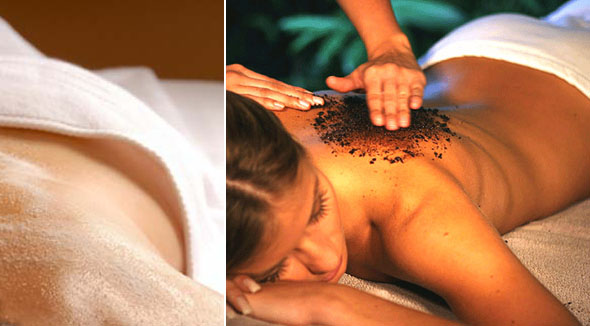Everyone wants to have a fresh and radiant complexion and nice, smooth skin. One of the best ways to achieve this is with a face scrub (if correctly used). Even a dozen years ago, cosmetics under the strange name "scrub" were a novelty. Back then, women could use only creams with crushed apricot seeds of their own making. Today, their choices are vast, and, moreover, for every skin type.
Skin cells are updated almost every second. A new cell is born, develops, moves to the surface of the skin, then dies and settles on the skin surface in the form of flakes. Accumulating on the surface of the skin, the scales form a kind of "armor,” which can give the skin a gray shade. Additionally, if there are a lot of flakes, the skin receives less oxygen. The life cycle of each cell, from birth to death, is about four weeks. A certain number of scales are washed off the skin with a normal washing (purification), but not all cosmetic products have an exfoliating effect.
Scrub is a portmanteau of to rub and to scrape, and generally means tto rub, scrape, or clean. A scrub is a cosmetic for deep cleaning of the skin (peeling). It contains a softening base (an emulsion, gel, cream or cosmetic clay) and fine abrasive particles. The softening base protects the skin from damage (such as scratches, or micro traumas), and often also contains anti-inflammatory components. Solid abrasives particles can be natural (olive bones, ground apricot, coconut, salt, sugar) or synthetic (plastic pellets).
With regular use, scrubs reduce the number of comedones, or blackheads (black dots on the skin), and prevent their occurrence. They facilitate deep cleansing, removing dead skin cells, cosmetics, perspiration and pollution products from the upper skin layer, allowing the skin to breathe better. Scrubs also improve oxygen metabolism, blood circulation, and the appearance of the skin and complexion. The skin becomes smooth and tender. Scrubs also prepare the skin for subsequent phases of care, improving the skin's ability to absorb nutrients, moisturizing and nourishing masks, creams, and lotions.
At the same time, frequent use of a scrub may lead to the thinning of the protective layer of the skin, and the violation of its water-salt balance, due to the fact that it accelerates the evaporation of moisture from the skin’s surface. The skin becomes drier and more susceptible to infection and irritation. Therefore, a scrub should be used wisely and according to skin type.
Having dry skin is not conducive to frequent scrub usage. This purification procedure should be taken at a maximum of once every two to three weeks; otherwise, the skin will start peeling off. A more gentle scrub must be chosen, with tiny or dissolving particles that do not cause skin damage. It is also possible to use scrubs with synthetic abrasives, as they do not have sharp edges.
For normal skin, the optimum frequency of intense cleansing with a scrub is no more than 1-2 times a week.
Oily skin needs to use a scrub more often than dry—about once a week, because it is well-suited for products containing clay.
Scrubs are a vigorous and efficient process, so its use has several limitations. Concerns for scrub use are any skin diseases, blood vessels too close to the surface, and spider veins. The procedure must be done extremely carefully if the facial skin is irritated, inflamed, or has a rash or acne—in this case the particles of the scrub will only aggravate the problem. It is more beneficial to use peelings with soft particles.
Facial scrubs are the most delicate of all, as they have a smooth texture, whereas body scrubs are rougher in texture.